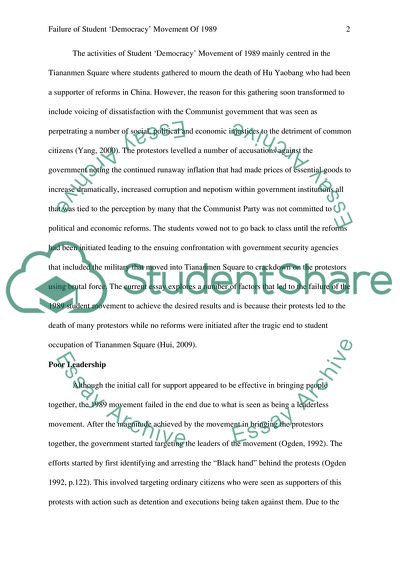Cite this document
(Failure of Student Democracy Movement of 1989 Essay Example | Topics and Well Written Essays - 2000 words, n.d.)
Failure of Student Democracy Movement of 1989 Essay Example | Topics and Well Written Essays - 2000 words. https://studentshare.org/history/1831187-8-why-did-the-student-democracy-movement-of-1989-fail-chinese-studies
Failure of Student Democracy Movement of 1989 Essay Example | Topics and Well Written Essays - 2000 words. https://studentshare.org/history/1831187-8-why-did-the-student-democracy-movement-of-1989-fail-chinese-studies
(Failure of Student Democracy Movement of 1989 Essay Example | Topics and Well Written Essays - 2000 Words)
Failure of Student Democracy Movement of 1989 Essay Example | Topics and Well Written Essays - 2000 Words. https://studentshare.org/history/1831187-8-why-did-the-student-democracy-movement-of-1989-fail-chinese-studies.
Failure of Student Democracy Movement of 1989 Essay Example | Topics and Well Written Essays - 2000 Words. https://studentshare.org/history/1831187-8-why-did-the-student-democracy-movement-of-1989-fail-chinese-studies.
“Failure of Student Democracy Movement of 1989 Essay Example | Topics and Well Written Essays - 2000 Words”. https://studentshare.org/history/1831187-8-why-did-the-student-democracy-movement-of-1989-fail-chinese-studies.


